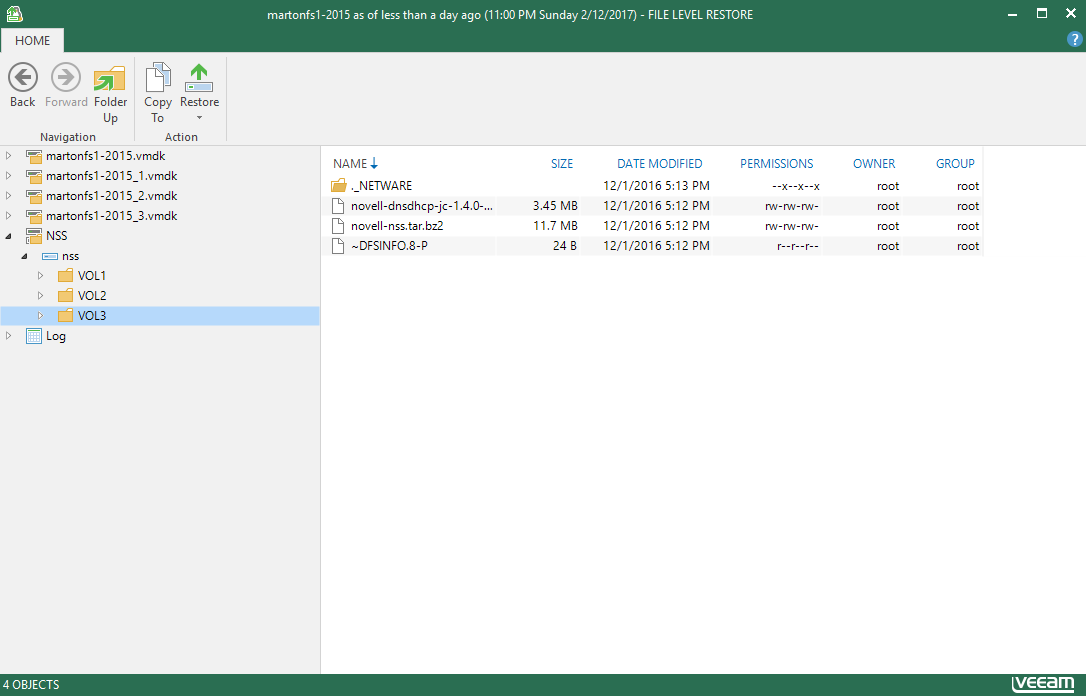Veeam has a great relationship with Microsoft and, as a result, we have many industry-leading data protection options for Microsoft solutions. But what about heterogeneous environments? Many customers run a mixture of open source technologies and Microsoft technologies. Veeam Backup & Replication is agnostic as to the operating system running in a virtual machine, but specific features such as Application-aware Image Processing (AAIP) and File-Level Restore (FLR) must interact with the guest OS. That’s where our continued enhancements ensure that your environments are protected across a broad array of technologies.
A case in point is Micro Focus (formerly Novell) Open Enterprise Server and SUSE Linux. Many customers, from schools, government, and health care to large enterprises, continue to use these platforms. We have supported these platforms in various ways and in Veeam Backup & Replication v7, we introduced specific FLR support for the NSS filesystem. Just as Windows has evolved, so has OES, and with our 9.5 release, we’ve enhanced our NSS support for new features introduced in Open Enterprise Server (OES) 2015 such as 64-bit NSS and AD-enabled NSS volumes. In Update 1, we further enhanced our support for the new Trustee Index NSS feature introduced in OES 2015 SP1.
The magic to make this happen is in our FLR Linux-based “helper appliance.” Anyone that has ever used Veeam Backup & Replication to restore non-Windows filesystems is well aware of this appliance and its ability to mount many different filesystems such as ext3, ext4, xfs, btrfs and so on. It’s simple to enable NSS support by simply checking “Restore from Novell Storage Services (NSS) file system” in the FLR Appliance Configuration dialog.
Checking this box loads NSS kernel modules into the helper appliance for true NSS support rather than using a client. This yields identical support that is available directly within Open Enterprise Server. In 9.5, we upgraded the appliance with the modules available in OES 2015, and in Update 1 we upgraded the appliance once again with the modules available in OES 2015 SP1. As you can see from the screenshots below, we accurately display the contents of NSS volumes in the Veeam Backup browser, even when they utilize newer NSS features. In this example, VOL3 is an AD-enabled volume:
We didn’t stop there. Our Oracle support added in Veeam Backup & Replication v9 supported Oracle running on both Windows and Linux. However, this did not include Oracle running on the latest versions of SUSE Linux Enterprise Server (SLES). With 9.5, we now support full Oracle AAIP, including redo log backup, for Oracle running on SLES 11 and SLES 12. And speaking of SLES, for those of you who have looked into our Veeam Agent for Linux, you may have seen official SLES support there as well for both SLES 11 and SLES 12.
As Veeam Backup & Replication continues to evolve into even more of an enterprise solution you can expect to see additional enhancements that support multiple technologies. These are important for customers of all sizes regardless of industry. Our OES and SLES enhancements are just a small sample of that. But don’t just take our word for the importance of these features. Here is what Jeffrey Schopp, System Administrator at North Central College has to say: “With Veeam’s File-Level Restore option, we are able to quickly restore files or folders when the salvage option is not available in Novell Storage Services (NSS). With the many multitude of files systems we are responsible for it is important to have a File-Level Restore option that works on them all.”
As a Veeam customer, what should you do next? If you leverage OES with NSS volumes in your environment, please upgrade to 9.5 with Update 1 right away. Even if you haven’t upgraded to OES 2015 yet, or if you’ve upgraded but haven’t implemented the new NSS features, you’ll still be prepared from a Veeam perspective for these new features. If you aren’t yet a Veeam customer, now you have even more reasons to evaluate Veeam.



